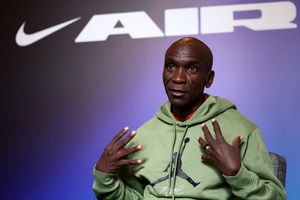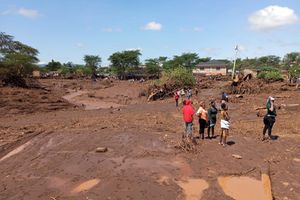South Sudan may as well be called Luoland
The Luo Nation lives in nearly 10 states — Central Africa, Congo, Ethiopia, Eritrea, Kenya, Tanzania, Uganda and the two Sudans.
But South Sudan is their umbilical cord. All claim Diding’a on dog nam as their original home.
Dog nam is the Acholi equivalent of dhonam, Dholuo for “Mouth of the Lake” — that is, a lakeshore. There is no agreement on which lake it is.
Most historians identify it as Lake No or River Palugo or what the Arabs called “Sea of the Gazelle” (Bahr El Ghazal). The three, it is thought, are the same thing.
From time immemorial, the Luo have lived along the majestic Nile, between that lake and another one they call Nam Lolwe (“water that extends to the ends of the earth”). This refers to that ultimate fish paradise, which colonial Britain renamed “Lake Victoria”.
Yet all our newspapers claim that what was born on Saturday somewhere between those lakes was a “new nation”.
No, the Luo are not a new nation. The Acholi, Adhola, Alur, Anyuak, Bor, Dinka, Jonam, Kumam, Lang’o, Nuer, Podho (the Luo of Kenya and Tanzania) and Shilluk have been there Tangu zamani za Haruni. What is new is only the Juba-based state.
The Luo and the Ateker compose the African section of the great Nilotic family. The Ateker include the Ilmaa (“Maasai”), Ilmol (“Elmolo”), Iloikop (“Laikipiak”), Ilsampur (“Samburu”), Iltiemus (“Njemps”), Karimojong’ (“Karamoja”), Myoot (“Kalenjin”) , Ngiturkan (“Turkana”) and Atesot (“Teso”).
Consanguine with them were the ancient Murru (“Amorites” of Babylon), Canaanites (Phoenicia), Colchians (Armenia), Kaptah (Copts of Egypt), Nubians (Sudan), Danaans (Greece), Dananns (Ireland), Dravidians (India), Edomites (Sinai), Etruscans (Italy), Gauls (France), Hausa (Nigeria), Lixitae (Morocco), Minoans (Crete), Sumerians (Iraq) and Susans (Persia).
From Tekidi (Tiendkidi) through Pakwach, Palwo, Kaberamaido, Budola, Yimbo, Alego, Mumias, Mirunda and Awendo to Mariwa, the Luo also ingested much exotic blood. They included the Muru, a Sudanic offshoot of the Amorites, who probably are the ancestors of the Mur-nyala of Alego in modern Kenya’s Siaya and Migori.
The Luo also civilised and then swallowed the Oma-chuji, an extremely primitive Hamito-Semitic community invading Southern Sudan from the Red Sea. Oma is said to be the origin of the name Bahima and Chuji of the name Bachwezi.
A conflation of energy between Bachwezi and Babito-Luo was what created the sprawling empire over such great Bantu peoples as Ankole, Ganda, Haya, Hutu, Luhya, Nyoro, Soga, Toro and Tutsi.
The royal title Nabongo is only a corruption of Nyabong’o, an epithet of Kitara, the Luo founder of the Bunyoro kingdom.
The Luo describe themselves with profound pride as Ochol and Rateng’), adjectives which mean “black”.
For they are probably the blackest people on earth. Indeed, blackness is why the Acholi and the Collo (pronounced Cholo) are called so. Shilluk, as the Collo are also known, has the same etymology.
The nouns Ochol and Oteng’ (or Jorateng’) refer to the Negro race, namely, those whom the God Jok created from specially treated black clay from Kiir (the Luo name for the Nile significantly carried by South Sudan’s first President).
Dichol endearingly describes a woman with a smooth black skin. Thus, in the biblical book of Songs, the Goddess says of herself: “I am black and beautiful”. The Song, we now know, eulogises Astarte, the Canaanite “Queen of Heaven”, an alter ego of the Nilotic Isis.
In Southern Sudan, however, the state nearly coincides with the nation and may justify the term “nation-state”, which we misuse even for multi-national states like India, Nigeria and the UK.
Even though Southern Sudan’s Luo Nation spills over into other states, Juba is more or less a one-nation state.
Thus — despite the Ateker admixture — South Sudan might fittingly rename itself “Luoland” — just as (for convenience’s sake) the term “England” celebrates only the Dutch Angles, not the Cornish natives or the German Saxons or the Danish Jutes.




